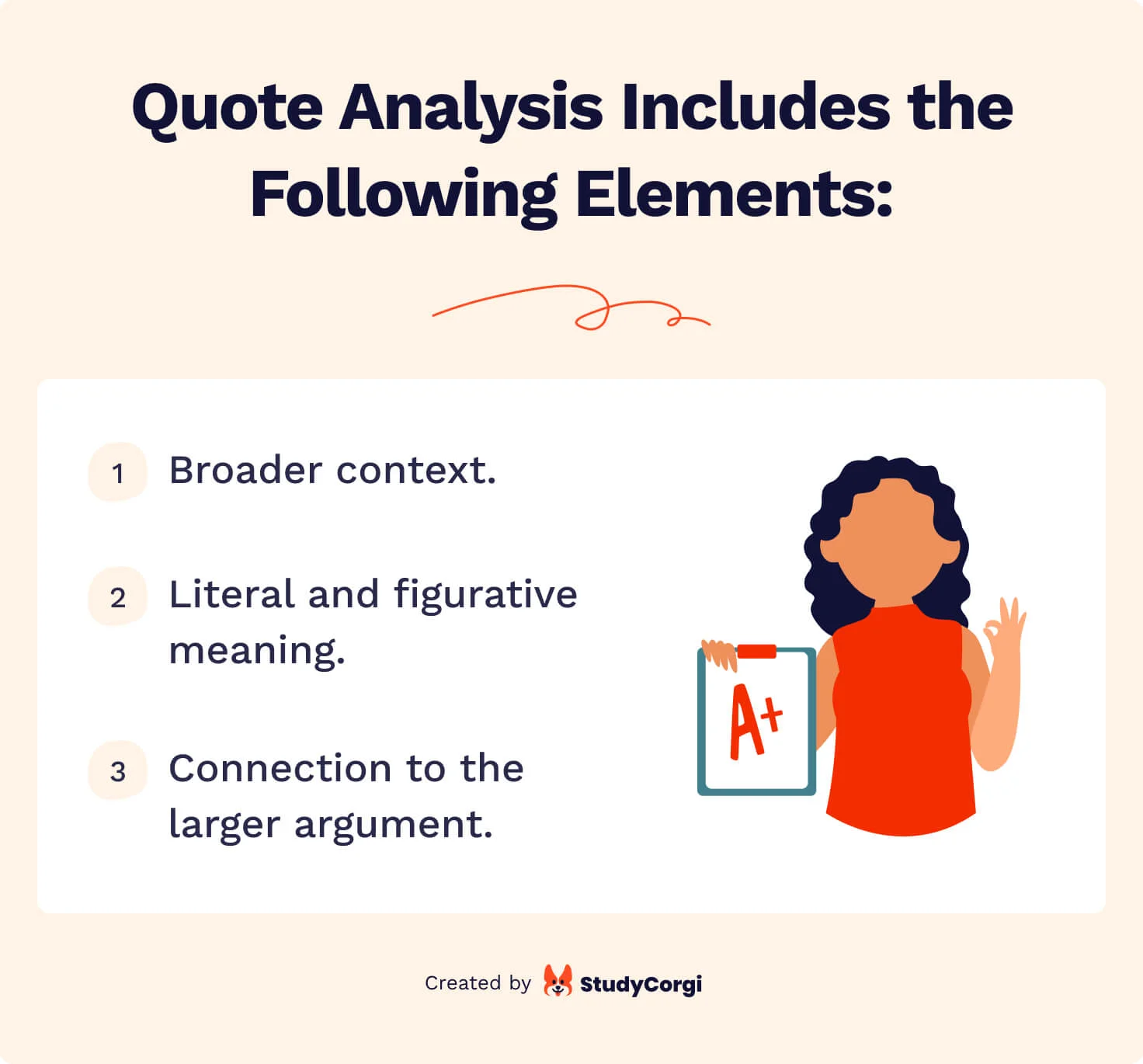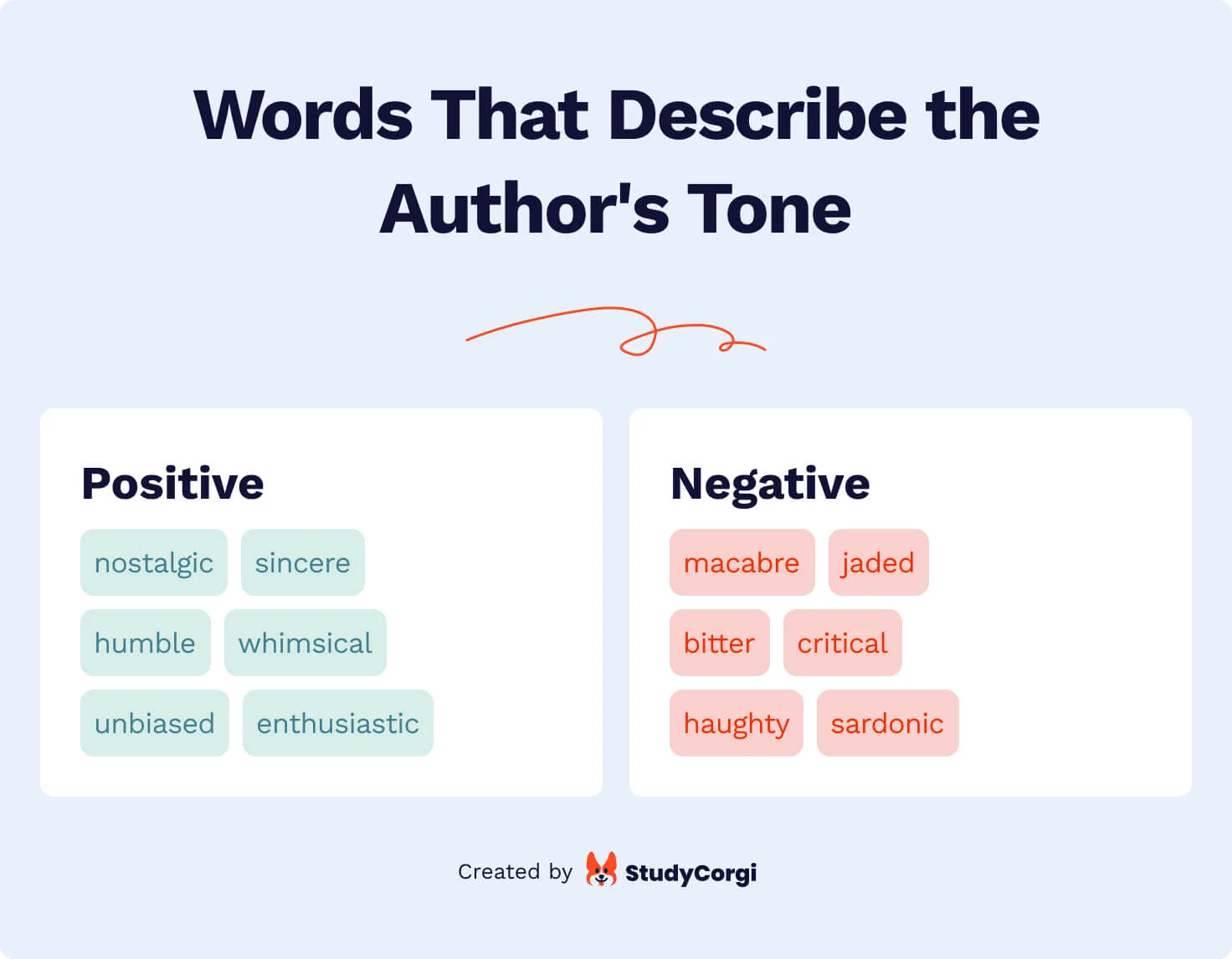🚀 How Our Quote Analysis Tool Works
Here’s how you can use the power of ChatGPT’s AI to analyze quotes via our generator:
- Copy the quotation into the empty field.
- Optionally, write the name of the quoted person.
- Choose between general or literary analysis.
- Press “Analyze” and get an astonishing result!
🏆 Benefits of Our Quotation Analysis Generator
The internet is full of various study tools, but most of them are of low quality or require payment. Our “analyze quote” generator is truly a gem, and here’s why:
💬 What Is a Quote Analysis?
A quote analysis involves reviewing a quote to comprehend its meaning. The main goal of such analysis is to understand the value of the statement and its context. It can be achieved by examining the words, phrases, and structure of the saying. Quote analysis can also serve as a base for an argument because most sayings can be interpreted in various ways.

How Do You Explain a Quote in a Presentation?
- Provide the necessary context.
- Briefly introduce the quote.
- Explain its relevance to the topic or argument.
- Provide your interpretation or analysis.
- Connect it to your presentation’s theme.
How to Analyze a Quote from Poetry?
Here’s how to analyze a quote from a poem:
- Examine the literary devices used in the quote.
- Consider the poem’s language, rhythm, and structure.
- Interpret the quote’s deeper meaning and analyze its emotional impact.
- Link it to the themes and motifs of the poem.
How to Transition from Quote to Analysis?
To make a smooth transition from a quote to an analysis, provide a brief explanation of the quote’s relevance. Then, connect it to the main argument you’re discussing. Finally, start your analysis by delving deeper into the underlying meaning, implications, or evidence related to the quote.
📜 Analyzing a Quote Step by Step
Don’t know how to write a perfect quote analysis? Check out the helpful guide below!
Step 1. Choose the Quote to Analyze
If your teacher hasn’t assigned you a quote, you can pick one yourself. Here’s how to do it:
- Consider who or what the chosen saying refers to, where it appears in the context, and why it is crucial to understand its main idea.
- It wouldn’t hurt to consider the chosen quote’s length. We recommend picking a shorter one so that you don’t spend too much time on it. Remember that you can get an A+ with any quote, and it doesn’t matter how many words it has.
- Finally, pay attention to the quote’s meaning. Overly specific statements are tough to understand, so be sure to pick something more universal and transparent.
Step 2. Identify the Speaker and the Audience
Identifying the author of a quote is the next crucial step in evaluating it. Just answer the following questions:
- Who said the quote?
- Is it a well-known individual or a fictional character from a book?
- Does the author provide any explanation for the quote?
- What’s the quoted person’s audience?
The more you know about the speaker, the easier it will be for you to understand the quote and the setting in which it was spoken.
Step 3. Know the Context
Finding the quote’s context is the next crucial step to understanding the statement’s value. To do it, find the answers to the following questions:
- What is the quote’s historical, political, or cultural setting?
- What does the quote mean for the speaker and the audience?
- What was the speaker’s reason for saying this particular quote?
Step 4. Analyze the Literary Devices
A quote always has a specific style and structure, whether it is spoken or written. That’s why it requires you to locate the literary devices that may give the words more depth or a double meaning. Among those things are:
Step 5. Define the Tone of the Quote
Any comprehensive analysis needs to locate and demonstrate the quote’s attitude. It must show the statement’s effect and relevance. To define the tone of the quote, try to feel the author’s emotions and the settings in which it was said. Also, pay attention to the quote’s contents.
For example, to describe the mood of Dorothy Parker’s saying, “Take me or leave me; or, as is the ordinary order of things, both,” you can use the phrase: “With her trademark tongue-in-cheek defeatism, Dorothy Parker said…”

Step 6. Paraphrase the Quote
If you’re stuck with understanding the quote, try paraphrasing it in your own words. Use phrases like “In other words,” and then write how you see the quoted person’s idea. Make sure to convey the intended message!
In addition, you can also try using our free quote analysis generator. It’ll explain the meaning of a saying you’re analyzing and allow you to take a fresh look at it.
Step 7. Describe the Meaning and Implications
A truly comprehensive analysis requires you to give a personal opinion on the quote. To do it effectively, we recommend you answer the following questions:
- Why might the author have chosen to employ the literary devices and words they did?
- What do you think were the quote’s goals and objectives?
- Was the quote intended to be ambiguous in any way?
Once you’ve answered these questions, you should now have an understanding of what the author intended to accomplish with their saying.
Interpreting the quote and defining its meaning is the hardest step of the analysis. Need some help with it? Then definitely try our generator! It can help break through this barrier. As a result, you won’t make mistakes, and your analysis will receive a higher grade.
Step 8. Establish the Relevance to Current Events
The best way to establish a quote’s impact is to show how it still applies today, outside its original context. Try looking for similarities between the quote’s historical period and the current days. Additionally, explain the phenomenon of the words’ enduring impact.
For example, take Winston Churchill’s quote: “Healthy citizens are the greatest asset any country can have.” This quote will always remain relevant to society because healthy citizens contribute the most to their country. That’s why society must encourage a healthy lifestyle.
Just like that, you can analyze any quote that you like. We hope that our guide will help you as well as our generator. Feel free to try our app and see for yourself how the quality of your quote analysis will improve exponentially. Don’t believe us? Try it and see for yourself!
We also suggest using our mission statement and research hypothesis generators.
Updated: